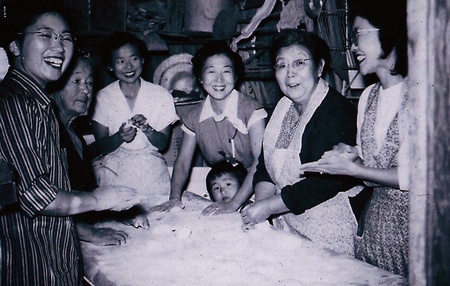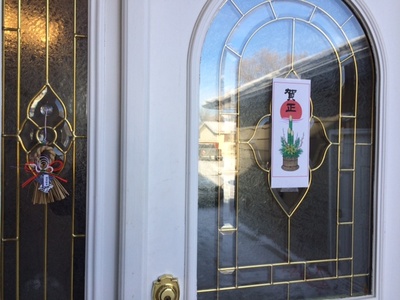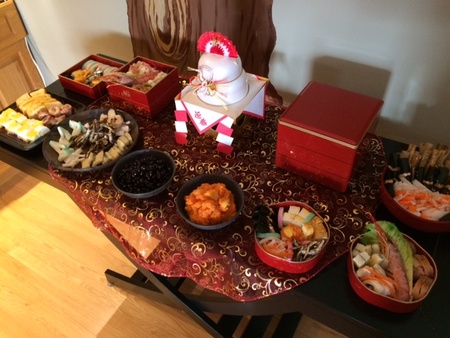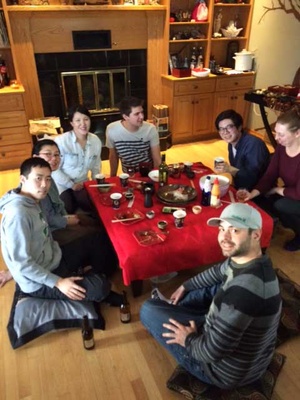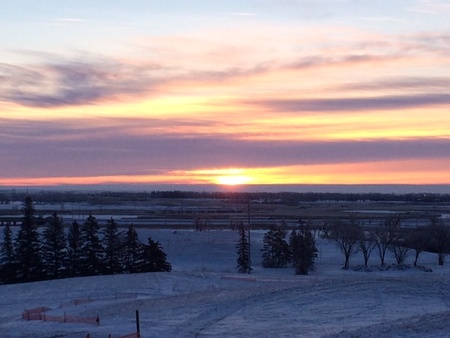Read Part 1 >>
A Nikkei Holiday Story
By John Nishio
This is the story of the 104th Annual Nishio Mochitsuki.
On Tuesday night, we hosted the Annual Mochitsuki of the Nishio Clan and Friends. The first Nishio mochitsuki in the US was held in 1912 by my grandfather and granduncle and their wives. They continued it through good years and bad; they made it a point to have mochitsuki even during the war years, when they were in the American concentration camps. It's been held at different Nishio farms, uncles’ and aunts’ homes, and my parents’ home, until I took it over in 2004.
My cousins and I missed the family closeness that we loved while growing up, so I've tried to recreate that spirit of togetherness. I try to instill knowledge of our family history and cultural heritage through family videos and our mochitsuki gatherings. They’ve brought our family back together, and we have a true family identity now.
Every year we have a wonderful time together—talking story, catching up on each other's lives, and finishing the year on a high note of fun, family, and feasting. We lost count, but I think around 36 people attended this year, even though it was on a weekday and some people couldn’t come.
I got a chance to do some major cooking and sushi-making. I made sushi, homyu, chicken teriyaki, chashu, Japanese potato salad, and ozoni. It’s exhausting but fun, and the cost is nothing compared to the fun of getting together as a family. When I cook for mochitsuki, I imagine what it was like when our grandparents cooked for this occasion, knowing the pleasure their food would bring to all the family members who came.
I am so grateful that our grandparents kept this tradition alive, and grateful that people go out of their way to attend each year. It’s become something rare and endangered in the Japanese American community. Fourth- and fifth-generation Nishios and friends are learning about our rich cultural heritage, so I know our family tradition will live on. Relatives came from Canada, Las Vegas and Reno, and right here in Southern California.
This year’s mochitsuki was held in honor of my Aunt Rose, who passed away earlier this year. She never missed a mochitsuki that I can remember, and she was one of the reasons we still have our tradition.
The Issei brought the mochitsuki tradition with them from Japan; the Nisei did their best to keep it alive; and now we Sansei, Yonsei, and Gosei have had the torch passed on to us, and we can’t let it go out.
* * * * *
2017 Kagami-Biraki New Year’s Celebration in Chicago
By Japanese American Service Committee
On Saturday, January 7, 2017, the Chicago Japanese American community held its annual Kagami-Biraki celebration to welcome the New Year, with roughly 200 people in attendance throughout the day. Sponsored by Tohkon Judo Academy and the Japanese American Service Committee, this multigenerational and multicultural event involved mochi pounding throughout the morning and the making of mochi balls for the attendees, with the help of a crew of volunteers.
Typically, the mochi balls are filled with traditional fillings such as azuki beans. However, some of this year’s mochi balls were filled with chocolate instead, presenting a unique twist on a familiar Japanese New Year’s food. In past years, some mochi balls had strawberry filling as well.
The formal program began with an Oharai purification ceremony at noon by representatives of the Tenrikyo Midwest Church. Entertainment and martial arts demonstrations were provided by the Buddhist Temple of Chicago’s Kokyo Taiko group, the Chicago Aikido Club, and Tohkon Judo Academy. The event ended with a community potluck, with many homemade dishes enjoyed by all.
* * * * *
Traditional Oshogatsu in Regina, Canada
By Koreto Yamauchi
I want to share my New Year’s experience with you since I celebrated the holiday in a traditional Japanese way with my family and friends this year. We got simple items for the decoration of our entrance door, round rice-cake (kagami-mochi), homemade osechi dishes, sweet sake, ozoni dishes, and money gifts (otoshidama), and had a party with people sitting on the floor. As we couldn’t get everything in Regina in the Saskatchewan province, we bought some in Vancouver. I think that sitting on the floor helped create a mood for oshogatsu.
I found this thing called “paper pine tree decoration,” so I printed it out and put it on. I bought round rice cake (kagami-mochi), tiered food boxes, and some other things in Vancouver. In the slow cooker, there is some sweet sake made from dried rice malt. As for pochi-bukuro (small envelope), I simply printed one I found on the Internet and cut and pasted it, which turned out really well. Ozoni dish is another thing we can’t miss in Japanese oshogatsu.
We used our couch as a table and pillows as cushions. Some people couldn’t sit on the floor, but we were able to create a different mood for oshogatsu. This is a picture of the first sunrise of this year, which I took at Wascana Hill in Regina—an extra piece of memory to add to my oshogatsu experience.
On January 22nd, an annual New Year’s party will be held at Regina Japanese Canadian Club Inc., and visitors can enjoy drum and koto performance, sweet sake, the first calligraphy writing of the year, rice-cake pounding, karuta (a traditional Japanese game using cards), fukuwarai (a puzzle using paper pieces of human facial parts), and more.
© 2017 John Nishio, Koreto Yamauchi, Japanese American Service Committee of Chicago




